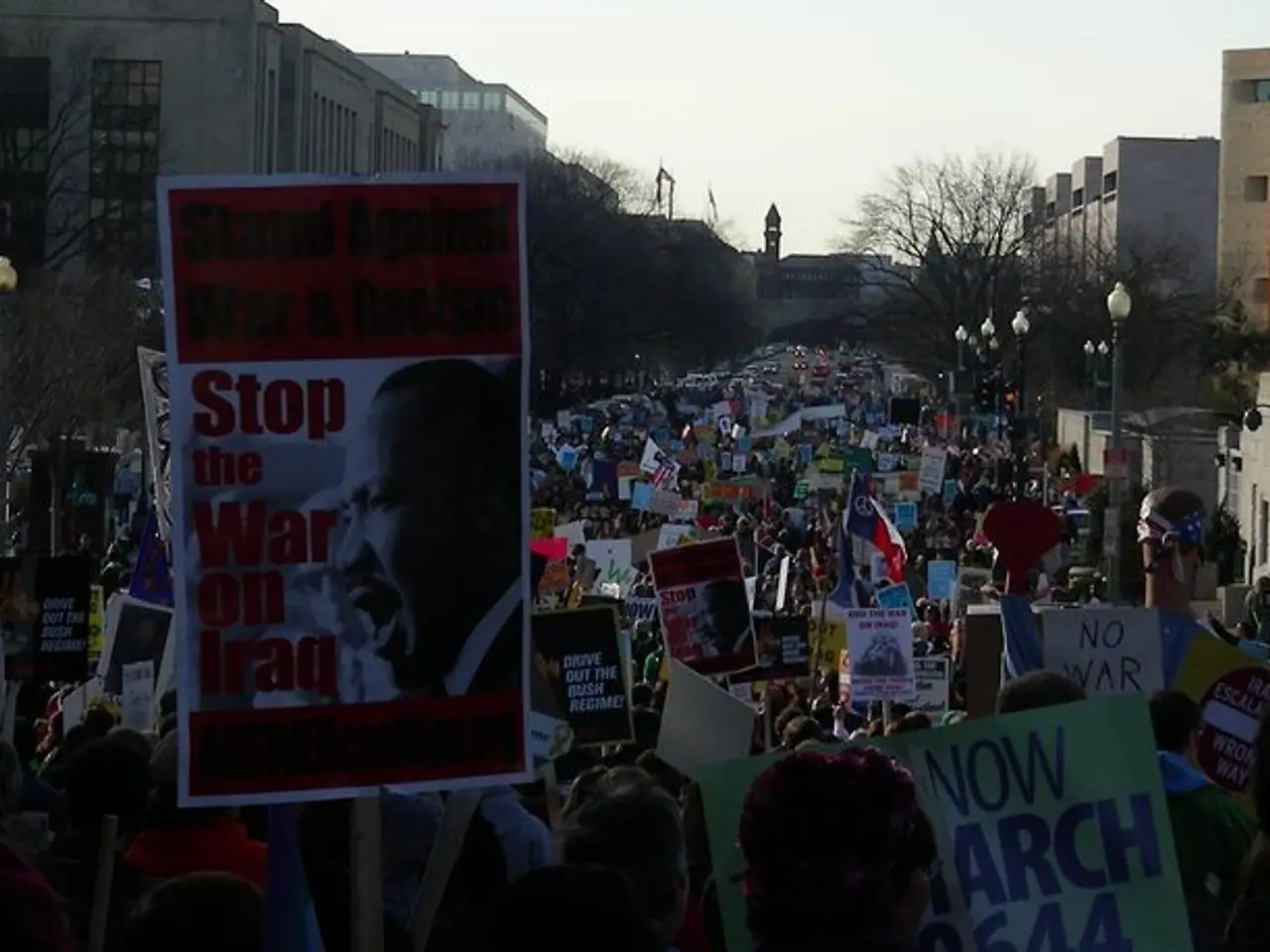Protests in Serbia see fresh clashes, leading to multiple injuries and apprehensions - Clashes Continue in Serbia, Leaving Many Injured and Detained
In the heart of Europe, the city of Serbia has been witnessing a series of protests that have been ongoing for months, with the focus on corruption and the government. This unrest can be traced back to November 2024, when a tragic incident occurred at the Novi Sad railway station. A concrete canopy collapsed, leading to the death of 16 individuals, an event that sparked widespread outrage over alleged corruption and negligence linked to the ruling Serbian Progressive Party (SNS), led by President Aleksandar Vučić.
The situation escalated significantly on August 12, 2025, when pro-government supporters violently attacked protesters in the northern towns of Vrbas and Bačka Palanka. The protesters were met with stones, frozen water bottles, and fireworks. The police notably did not intervene to stop the pro-government violence, which caused public outrage. Since then, nightly clashes between protesters and police have spread across Serbia, including in Belgrade and Novi Sad, with frequent use of tear gas and riot tactics by the police.
The protesters accuse the police of brutality and excessive force, with accounts of beatings during arrests. These incidents have fueled anger and larger mobilizations. An inflammatory video showing detainees kneeling before police officers in Novi Sad was circulated by pro-government media, adding to the controversy. Supporters of Vučić’s regime have also been documented attacking peaceful demonstrators.
President Vučić has publicly supported police actions and promised bonuses for officers, asserting the protests are instigated by Western powers aiming to destabilize his government, although he has provided no concrete evidence for this claim.
Regarding Ivica Dačić, although he is a senior member of the ruling coalition and a prominent government figure, none of the recent reports explicitly mention his direct role in the clashes or the protests. The central figures remain President Vučić, the police forces, pro-government supporters, and the protest movement.
The protests, initially sparked by the Novi Sad train station tragedy, have since expanded to target corruption in the country. The largest demonstration so far saw around 300,000 people participate. In Belgrade, protesters gathered outside the government headquarters and the army's main base before marching to the SPS headquarters, where offices of the ruling Serbian Progressive Party (SPS) were vandalized. Similar incidents were reported in Novi Sad, where offices of the SPS were vandalized in three locations.
As the situation continues to unfold, it is clear that the cycle of political violence between anti-government protesters, police, and pro-government supporters is deeply rooted in the dissatisfaction with ruling party corruption and governance under Vučić. The future of Serbia remains uncertain, with the ongoing protests and clashes serving as a testament to the deep-seated discontent among its citizens.
- The focus of the ongoing protests in Serbia, which have been ongoing for months, is not only restricted to the Novi Sad train station tragedy, but also extends to the employment policy of EC countries, given the widespread perception of corruption and negligence in the government's politics.
- The escalating violence in Serbia, involving nightly clashes between protesters and police, has grabbed the attention of general-news outlets worldwide, with crime-and-justice reports increasingly focusing on the alleged brutality and excessive force employed by the police while dealing with the employment policy-centric anti-government protests.





